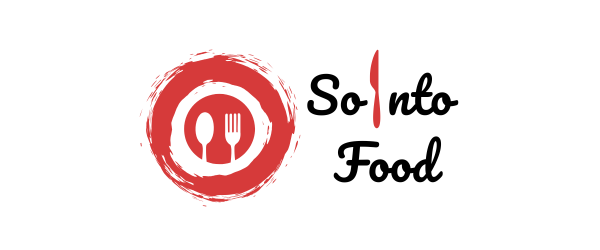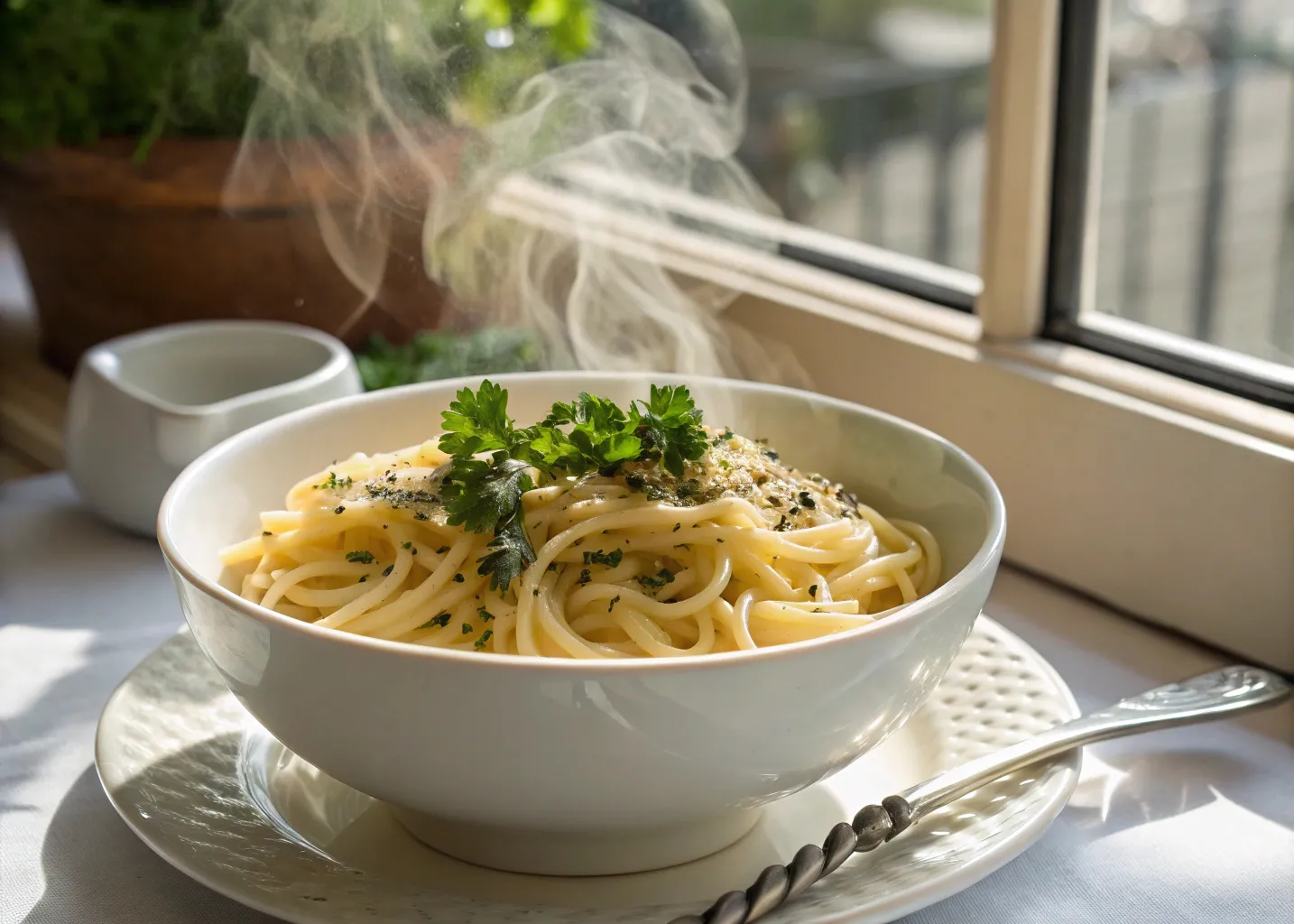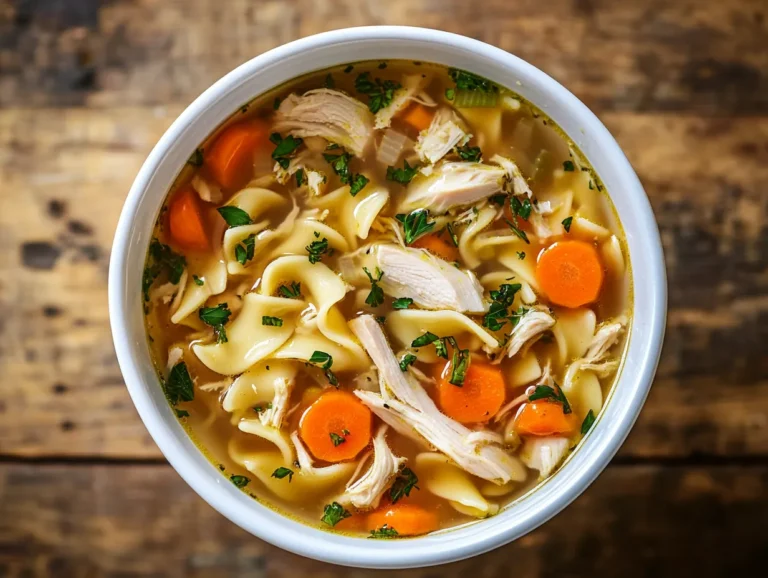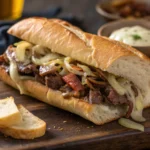If you grew up in the South or ever had a school lunch tray with a scoop of creamy, buttery noodles sitting next to mashed potatoes, then you already know what cafeteria noodles are. They’re not fancy. They’re not trendy. But they are pure comfort—a nostalgic bite of warm, starchy joy that fills you up in the best way.
This recipe recreates that cozy school lunch classic from scratch—with simple pantry ingredients, and no processed shortcuts. The best part? It comes together in under 30 minutes, making it a perfect weeknight family meal. Whether you’re revisiting a childhood favorite or introducing it to the next generation, this version is richer, creamier, and better than the original.
Let’s break down what makes this dish so iconic—and how to make your own cafeteria noodles from the comfort of your home.
What Are Cafeteria Noodles?
A Trip Down Memory Lane: The Classic School Lunch Favorite
Cafeteria noodles are a humble, hearty dish made from wide egg noodles simmered in a seasoned broth or gravy until soft, creamy, and coated in buttery goodness. While every school district had its variation, the dish was often served with mashed potatoes or a slice of white bread on the side—a true carb lover’s dream.
What set them apart wasn’t just the ingredients—they were warm, hearty, and slightly indulgent. For many, this meal stood out as the highlight of school lunch.
Why They’re Still So Popular Today
Today, cafeteria noodles have had a resurgence among home cooks for good reason: they’re cheap to make, require no special skills, and are loaded with nostalgic flavor. Plus, they’re incredibly versatile—you can make them vegetarian, amp them up with herbs, or serve them as a side or main course.
They’re part of a larger comfort food comeback, especially during cooler months when we crave easy, cozy meals. They also store and reheat beautifully, making them a great make-ahead option.
Ingredients You’ll Need for Cafeteria Noodles
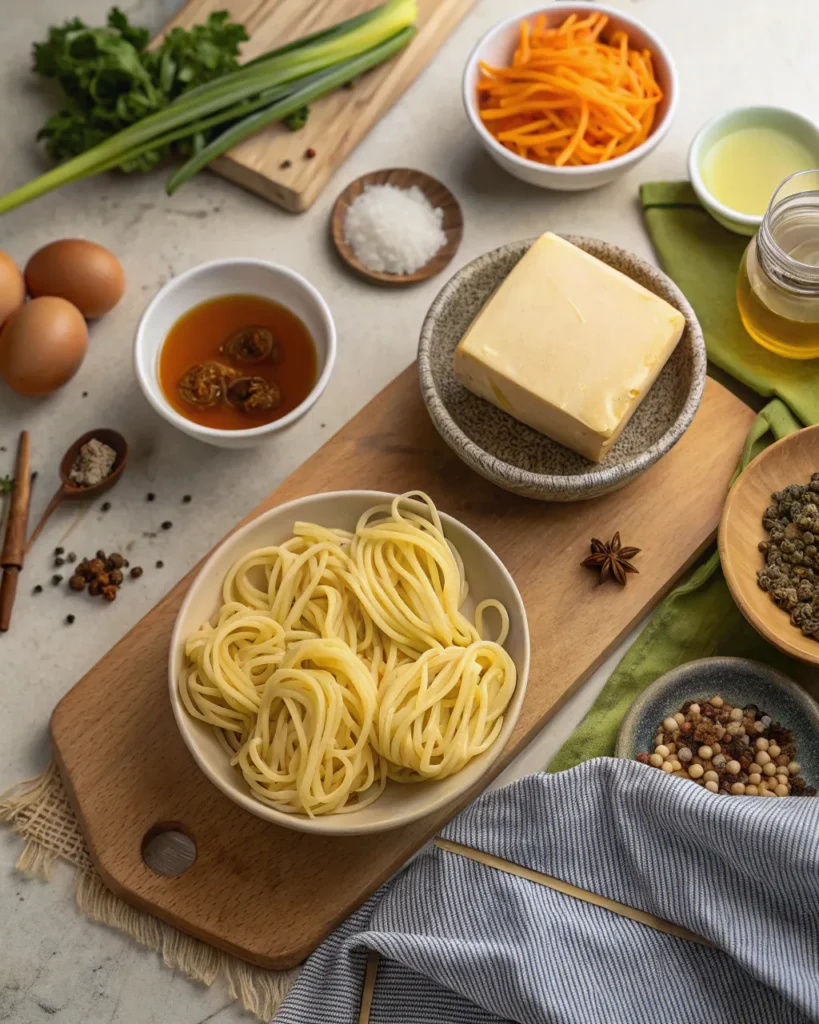
Core Pantry Staples You Likely Already Have
One of the reasons cafeteria noodles are such a beloved dish is their simplicity. You won’t need to run to a specialty grocery store or order anything online—these ingredients are probably already in your pantry or fridge.
Here’s what you’ll need:
| Ingredient | Purpose |
|---|---|
| Wide Egg Noodles | The star of the dish; look for the old-fashioned kind for that chewy bite |
| Butter | Adds rich flavor and gives the sauce its signature creaminess |
| Chicken Broth or Stock | Forms the savory base; use low-sodium to control the salt level |
| Salt & Pepper | Essential seasoning for depth and balance |
| Garlic Powder & Onion Powder | Boosts flavor without overpowering the dish |
| Cornstarch or Flour (Optional) | Helps thicken the broth if you want a gravy-like consistency |
Pro Tip: If you don’t have egg noodles on hand, you can use fettuccine or tagliatelle, but be sure to slightly undercook them so they don’t turn mushy in the broth.
Optional Add-Ins (Vegetarian-Friendly Alternatives)
Want to level up your cafeteria noodles while keeping things meat-free? Try some of these optional add-ins that add texture and flavor without compromising the dish’s simplicity:
- Frozen peas or carrots – adds color and a bit of sweetness
- Sautéed mushrooms – for an earthy, umami touch
- Chopped herbs (parsley or thyme) – brightens up the dish
- Cream or milk – for an extra velvety sauce
- Nutritional yeast – for a cheesy flavor without dairy
These ingredients are perfect if you’re making it as a full vegetarian meal or want to get creative with the base recipe.
Kitchen Equipment for Easy Prep
No Fancy Tools Needed: Just the Basics
Cafeteria noodles are old-school in the best way—they don’t require special tools, fancy pots, or high-tech gadgets. Here’s all you need:
- Large pot – for boiling the noodles and simmering the broth
- Slotted spoon or pasta fork – to stir and serve easily
- Measuring spoons and cups – to get your seasonings right
- Whisk – useful if you’re adding a cornstarch or flour slurry
- Colander – if you prefer to cook and drain the noodles before mixing
These are everyday kitchen tools, which means you can whip this dish up even if you’re short on time or space.
Quick Tips to Cut Down Cooking Time
We’re all busy—so here are a few tips to make your prep even faster:
- Boil water ahead of time using an electric kettle to speed up noodle cooking
- Use pre-minced garlic/onion powders for flavor without chopping
- Cook noodles directly in the broth to infuse more flavor and cut back on dishes
- Make a double batch and store the second half for an easy lunch tomorrow
Step-by-Step Guide: How to Make Cafeteria Noodles
Let’s get into the heart of this recipe. Making cafeteria noodles is all about layering simple ingredients the right way to get that nostalgic, creamy finish. No shortcuts, no stress.
Step 1: Cook the Noodles Just Right
Start with a pot of salted, boiling water. If you’re using wide egg noodles (recommended), they usually cook in 7 to 9 minutes. You want them tender but not falling apart.
- Pro tip: Slightly undercook the noodles if you’re going to simmer them in broth afterward. They’ll finish cooking and soak up all that flavor without getting mushy.
If you’re short on time, you can cook the noodles directly in the broth. Just monitor the liquid level—no one wants dry noodles.
Step 2: Whip Up the Savory Broth
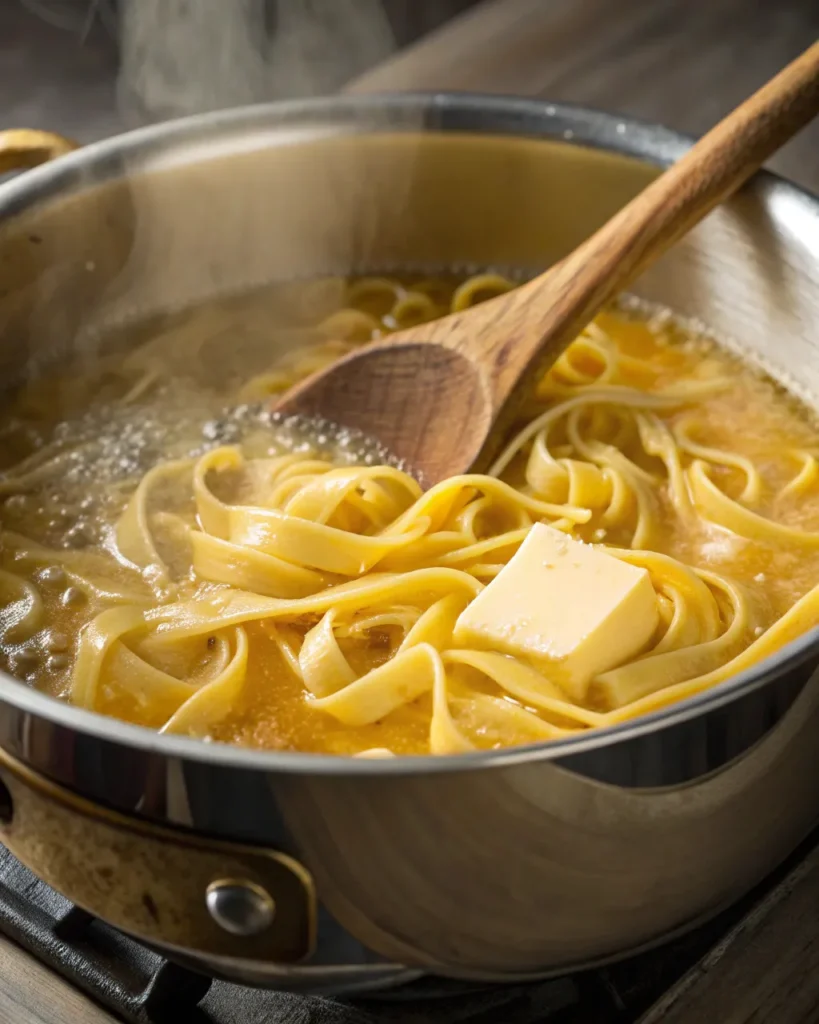
This is where the magic happens. While the noodles are cooking (or after, if you’re a one-pot kind of cook), it’s time to make that comforting broth.
In a large pot, melt 3–4 tablespoons of butter over medium heat. Once it’s sizzling, add in:
- 4 cups of low-sodium chicken broth (vegetable broth works too)
- ½ teaspoon each of garlic powder and onion powder
- Salt and black pepper to taste
Mix thoroughly and let the broth come to a gentle simmer.
Prefer a thicker texture? Combine 1 tablespoon of cornstarch with 2 tablespoons of cold water, then whisk it into the broth. Simmer for a few minutes until slightly thickened.
Optional: For a creamier result, add ¼ cup of whole milk or a splash of cream after the broth has thickened.
Step 3: Simmer and Serve
Once your noodles are ready, add them to the broth. Reduce the heat to low and let them simmer for 5–10 minutes. This allows the noodles to soak up that seasoned broth, transforming them into that creamy, sticky comfort food we all remember.
If the mixture looks too thick, add a bit more broth. Too thin? Let it simmer uncovered a few minutes longer.
Give it a final taste, then adjust the salt and pepper as needed before serving.
And that’s it! Serve your cafeteria noodles hot, straight from the pot. They’re perfect on their own, but also fantastic next to mashed potatoes, green beans, or a slice of buttered toast.
Secrets to Making the Best-Ever Cafeteria Noodles
Making cafeteria noodles is easy—but making them amazing takes just a few pro tips. Here’s how to turn a basic school-lunch memory into a rich, soul-satisfying dish that tastes like it came from a Southern grandma’s kitchen (but better).
The Power of Seasoning: Salt, Pepper, and More
Cafeteria noodles are all about flavor—even though the ingredient list is simple, the way you season can make or break the dish.
- Don’t overlook the broth: it’s the foundation of the dish. While homemade is excellent, a good-quality low-sodium store-bought broth also works well and provides most of the flavor.
- Salt gradually: Start with a pinch and build up. Too much salt early on can overwhelm the dish.
- Black pepper is key: It brings a soft, nostalgic heat that reminds you of grandma’s cooking. A dash of white pepper adds even more depth if you have it on hand.
- Boost with aromatics: While garlic powder and onion powder are the norm, adding a bay leaf during the simmering step, or a splash of soy sauce (for umami, not saltiness), can subtly elevate the whole pot.
The idea is to season every step, from boiling water to finished broth. This layers flavor instead of just dumping it all in at once.
Texture Matters: Achieving That Creamy Consistency
The perfect cafeteria noodles aren’t just tasty—they’ve got that signature silky, almost gravy-like texture that coats your tongue and keeps you coming back for bite after bite.
Here’s how to get it right:
- Simmer low and slow: Once the noodles hit the broth, turn the heat down. Letting it simmer gently helps everything meld and keeps the starch from breaking down too fast.
- Use a thickening agent: A bit of cornstarch slurry (or even flour mixed with butter to make a roux) thickens the broth just enough without turning it into soup or glue.
- Butter is your best friend: Don’t skimp on it. Butter rounds out the flavors, adds gloss, and gives your noodles that creamy finish without cream.
Looking for a richer finish without dairy? Stir in a spoonful of tahini or cashew cream at the end for a plant-based touch that still delivers creaminess.
What to Serve with Cafeteria Noodles
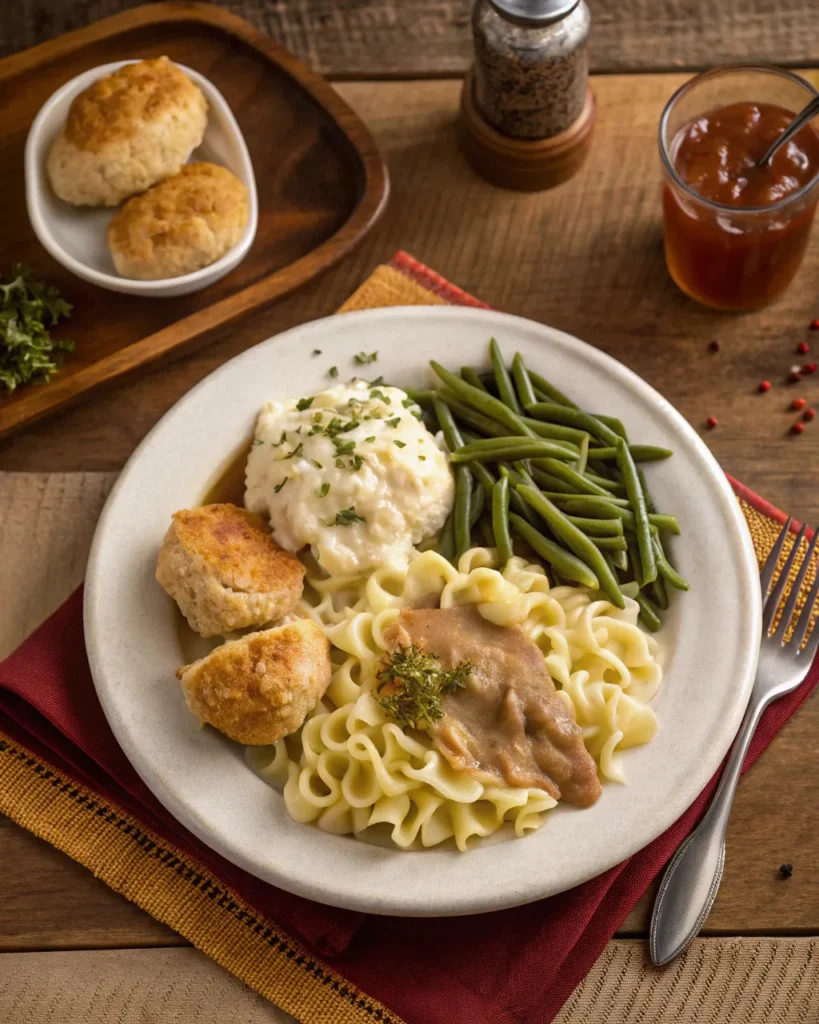
Cafeteria noodles are warm, rich, and incredibly satisfying on their own—but when you want to turn them into a full Southern-style meal or feed a hungry family, pairing matters. Whether you’re going for balance, nostalgia, or a little creativity, here are the best sidekick dishes for your noodles.
Delicious Pairings to Make It a Full Meal
Here are a few classic (and crowd-pleasing) options to serve alongside your cafeteria noodles:
🥔 Mashed Potatoes
Yes, carbs on carbs—it’s exactly how school cafeterias used to serve it, and it still works. The creamy potatoes soak up the savory noodle broth like a dream. Add a little cracked pepper and you’re golden.
🥦 Steamed Green Beans or Peas
Bright green veggies balance out the richness and bring a pop of color to your plate. Go light on seasoning and let the noodles shine.
🥗 Simple Garden Salad
If you want a bit of crunch and freshness on the side, a crisp salad with a light vinaigrette adds contrast without competing with the main flavor.
🍞 Buttered Dinner Rolls or Biscuits
Something to mop up that broth? Absolutely. A soft roll or flaky biscuit is practically a requirement in Southern-style noodle dinners.
🍗 Rotisserie Chicken or Roasted Tofu
If you’re craving more protein, throw in some shredded rotisserie chicken or pan-seared tofu cubes. Keep it simple and seasoned to complement—not overpower—the noodles.
Want something similar and just as creamy? Try this easy garlic parmesan chicken pasta — it’s a perfect comfort dish that pairs well with the same sides.
Side Dishes That Complement the Flavor
To elevate your meal without overpowering the subtle, savory goodness of the noodles, here are some sides that bring flavor and balance:
| Side Dish | Why It Works |
|---|---|
| Corn on the Cob | Sweet and buttery, it mirrors the simplicity of the noodles. |
| Baked Apples | Adds a gentle sweetness that pairs well with savory dishes. |
| Coleslaw | Crunchy and tangy; cuts through the creaminess of the noodles. |
| Sauteed Mushrooms | Earthy and rich—especially tasty if you’re going meatless. |
These options let you mix and match depending on what you have on hand or how hearty you want your meal to be.
Common Mistakes to Avoid
Making cafeteria noodles might seem foolproof, but even the simplest comfort foods can go sideways if you’re not careful. Below are some of the most common kitchen slip-ups and how to steer clear of them.
Overcooking the Noodles
This is the #1 mistake people make—and it’s an easy fix.
Egg noodles are softer than pasta, and they don’t need long to cook. If you let them boil too long or simmer endlessly in broth, they’ll get mushy, fall apart, and absorb too much liquid, turning your creamy sauce into a thick paste.
How to avoid it:
- Boil noodles just until al dente (firm to the bite)
- If simmering in broth afterward, slightly undercook them by 1–2 minutes during the initial boil
- Stir gently and don’t walk away from the pot
Using the Wrong Broth Base
The broth is the soul of the dish. Use a cheap, overly salty bouillon cube or a weak stock, and your noodles will taste flat or artificial.
How to avoid it:
- Use low-sodium chicken or vegetable broth
- Taste and adjust as you go—don’t rely on broth alone for flavor
- If your broth needs a lift, try a splash of soy sauce, miso paste, or even a dash of apple cider vinegar for brightness
Want to make your own broth? Simmer veggie scraps, herbs, and garlic in water for a DIY flavor boost.
Skipping the Butter
Let’s be clear—butter is not optional in cafeteria noodles. It brings richness, silkiness, and that iconic cafeteria flavor. Skimping or substituting with just oil may leave your dish tasting flat.
How to avoid it:
- Use real butter (not margarine) for the best flavor
- For a dairy-free version, use vegan butter with a creamy texture—not just oil
Not Letting the Noodles Rest
A quick simmer isn’t the end of the process. Letting your noodles sit for 5 minutes after cooking allows the flavors to soak in and the sauce to thicken up beautifully.
How to avoid it:
- After turning off the heat, leave the lid on
- Let it sit covered for 5–10 minutes before serving
This step makes a huge difference in the final texture and flavor.
Storage and Reheating Tips
Cafeteria noodles aren’t just a one-time comfort hit—they’re also a great make-ahead meal that stores and reheats beautifully. The key? Knowing how to do it without drying out the dish or turning the noodles to mush.
How to Store Leftovers Without Losing Texture
Got leftovers? Lucky you. Just follow these steps to keep your noodles fresh and flavorful:
Cool Completely First
Before transferring to the fridge, let your noodles cool to room temperature. This prevents condensation, which can make them soggy.
Use Airtight Containers
Place leftovers in a shallow, airtight container. This helps them chill faster and evenly, which keeps bacteria away and flavor locked in.
Refrigerate Promptly
Store noodles in the fridge for up to 3–4 days. Any longer, and the texture will begin to break down—even if the flavor holds up.
Bonus tip: If you know you’ll be reheating in batches, divide the noodles into individual portions so you only warm up what you need.
Best Way to Reheat for Next-Day Deliciousness
Noodles soaked in broth tend to thicken overnight. Don’t worry—that’s normal. You just need a little finesse when reheating to bring them back to life.
Stovetop Method (Best Flavor & Texture)
- Add a splash of broth or water to a saucepan
- Gently reheat noodles over medium-low heat
- Stir frequently to loosen up the sauce and prevent sticking
- Add a pat of butter for added creaminess
Microwave Method (Fast & Easy)
- Place noodles in a microwave-safe bowl
- Add a splash of broth or water
- Cover with a damp paper towel
- Heat on medium power in 30-second bursts, stirring between rounds
Avoid high heat, which can dry out or overcook the noodles.
Can You Freeze Cafeteria Noodles?
Technically, yes—but it’s not ideal. Noodles tend to get soft and grainy after freezing and thawing. If you do freeze them:
- Cool completely
- Store in an airtight, freezer-safe container
- Freeze for no more than 1 month
- Reheat slowly on the stovetop for best texture
Nutritional Info + Dietary Swaps
While cafeteria noodles are classic comfort food, that doesn’t mean you can’t tweak them to match your nutritional goals. Here’s what you need to know about what’s in the dish—and how to adjust it to suit various diets.
Health Breakdown of a Comfort Classic
Here’s a rough nutritional profile per serving (based on a 6-serving batch, prepared as written with butter and chicken broth):
| Nutrient | Amount (approx.) |
|---|---|
| Calories | 260–300 kcal |
| Total Fat | 11–14g |
| Saturated Fat | 6g |
| Carbohydrates | 35–40g |
| Protein | 6–8g |
| Sodium | 650–800mg |
| Fiber | 1–2g |
This makes cafeteria noodles a moderate-calorie, high-comfort dish—perfect as a main or a side. To lighten it up, just a few swaps will do the trick.
Simple Swaps to Make It Vegan or Low-Sodium
Going Plant-Based?
- Swap butter for plant-based butter or olive oil
- Use vegetable broth instead of chicken
- Add nutritional yeast for a cheesy flavor without dairy
- Stir in unsweetened plant milk for creaminess
Reducing Sodium?
- Choose a low-sodium broth (or make your own)
- Skip added salt during boiling
- Use herbs like thyme, rosemary, or parsley to boost flavor without extra salt
Need it Gluten-Free?
- Use gluten-free egg noodles (many brands now offer them)
- Thicken the broth with cornstarch instead of flour
These tweaks allow you to enjoy the nostalgic comfort of cafeteria noodles without compromising on your health goals.
FAQs About Cafeteria Noodles
What are cafeteria noodles made of?
Traditionally, they’re made with wide egg noodles, butter, and a savory broth—usually chicken-based. Some recipes include cream, herbs, or a thickener to make the sauce richer.
Can you make cafeteria noodles vegetarian
Absolutely. Swap the chicken broth for a quality vegetable broth and skip any animal-based add-ins. For extra depth, add mushrooms, garlic, and fresh herbs like thyme or parsley.
What kind of noodles are used in cafeteria noodles?
Wide egg noodles are the traditional pick—they absorb the broth well and maintain their texture. If needed, fettuccine or tagliatelle can be used as alternatives.
Can you freeze cafeteria noodles?
Yes, but it’s not ideal. The noodles may become soft or break apart once thawed. If you freeze them, reheat gently on the stove with extra broth to refresh the texture.
Why are my cafeteria noodles too thick or mushy?
This usually happens when the noodles are overcooked or left to simmer too long in the broth. To avoid this, slightly undercook your noodles before adding them to the sauce and simmer gently.
Are cafeteria noodles the same as egg noodles?
Cafeteria noodles use egg noodles, but not all egg noodles are cafeteria-style. It’s the cooking method—simmering in seasoned broth and butter—that gives them their signature flavor and texture.
Conclusion: Time to Bring Back a Classic
Whether you grew up loving school lunch days or you’re just discovering this dish for the first time, cafeteria noodles are the kind of recipe that brings people together. They’re easy, cozy, budget-friendly, and endlessly customizable for any kitchen or diet.
From their buttery richness to their simple, soothing flavor, these noodles are a reminder that comfort food doesn’t have to be complicated.
Now it’s your turn: grab a pot, stir with love, and bring this comforting classic back to life. Trust me, once you make them from scratch, there’s no going back to the cafeteria tray.
Don’t miss more cozy weeknight meals in our full recipe collection—perfect for simple dinners and nostalgic favorites alike.
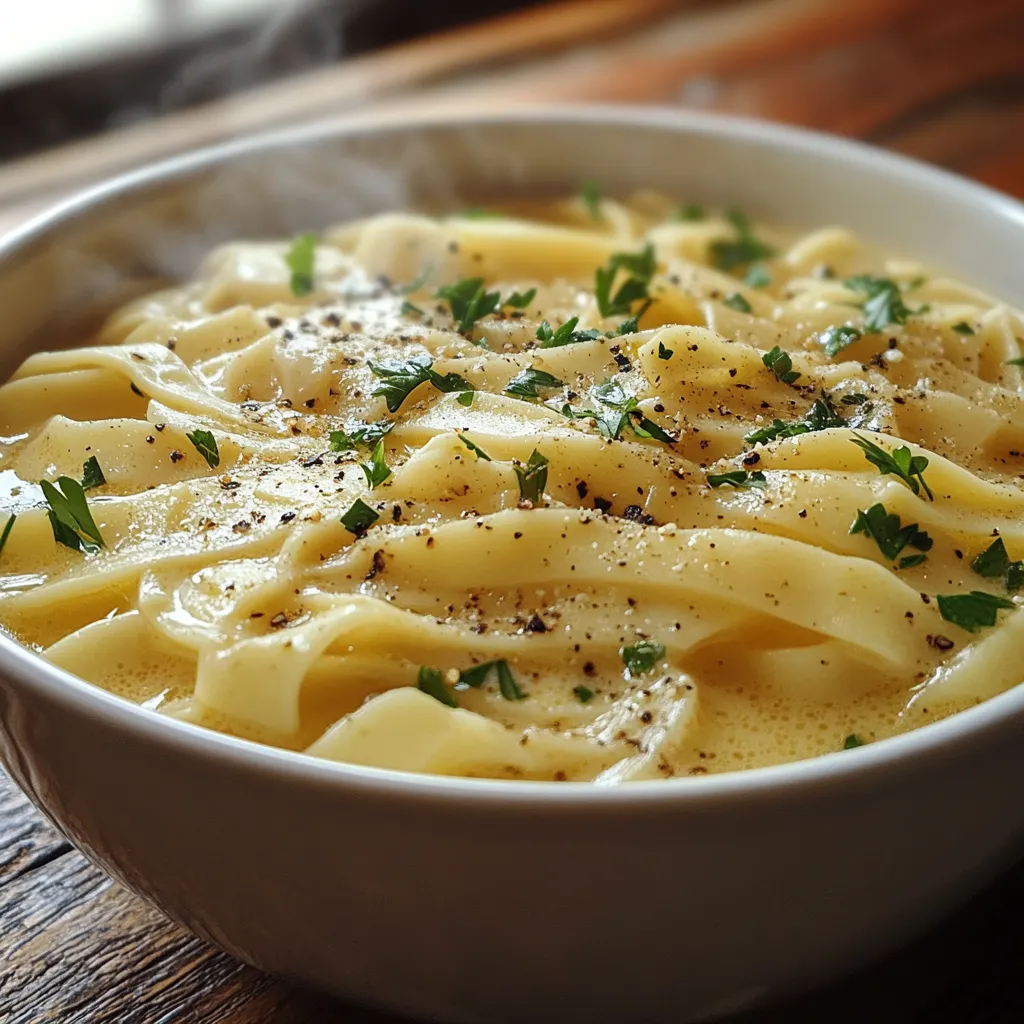
Cafeteria Noodles Recipe
Ingredients
Equipment
Method
- Bring a large pot of salted water to a boil. Add egg noodles and cook until just al dente, about 7–9 minutes. Drain and set aside.
- In the same pot, melt butter over medium heat. Pour in broth, add garlic powder, onion powder, salt, and pepper. Stir well and bring to a gentle simmer.
- For a thicker sauce, mix cornstarch with cold water. Slowly whisk it into the simmering broth and let it bubble until slightly thickened.
- Add the cooked noodles back to the pot. Simmer on low for 5–10 minutes, allowing flavors to blend and sauce to thicken.
- Optional: Stir in whole milk or cream for extra creaminess. Taste and adjust salt and pepper as needed. Serve warm.
Notes
- For a vegetarian version, use vegetable broth and plant-based butter.
- For extra richness, add sautéed mushrooms or fresh herbs like thyme or parsley.
- Store leftovers in an airtight container for up to 4 days. Reheat gently with a splash of broth.
